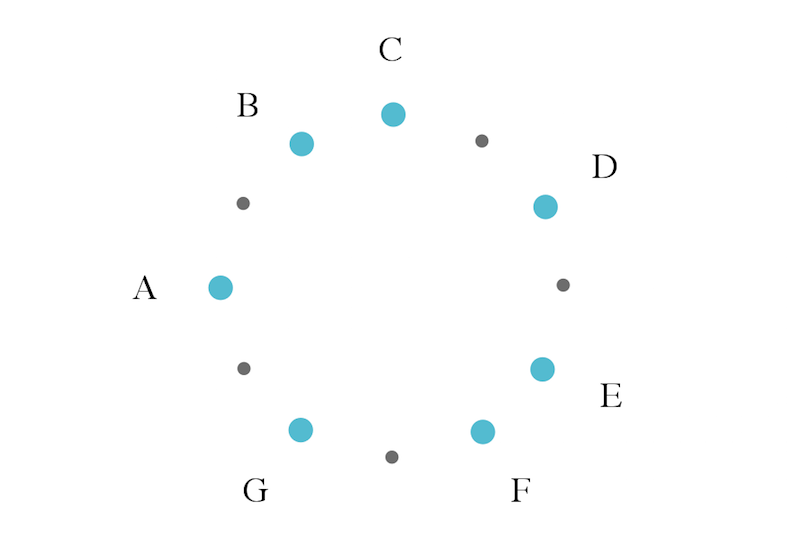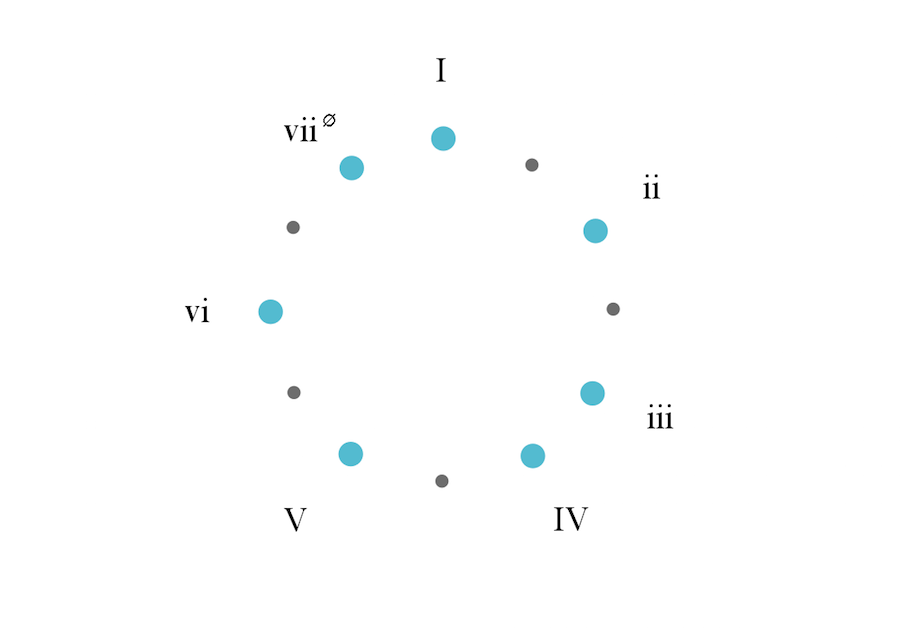Intro to Major Keys:
Here is an image of a C Major scale, starting with C at the top, moving clockwise to D, and around the circle toward B. You can play a chord starting on any of these notes, and every note in the scale has it’s own chord!
In the key of C Major, the C, F, and G are major chords. You can see that they are the 1st, 4th, and 5th notes in the scale.
Dm, Em, and Am are minor chords. They are on the 2nd, 3rd, and 6th, notes in the scale. The 7th chord on the B is a special case. We’ll address that later.

Roman Numerals:
When we talk about chords and key structure, we often replace the letter names with Roman numerals to indicate each chord. This allows us to easily understand the structure of a chord progression, regardless of what key we are in. In the image below we have replaced the letters with Roman numerals.

If you follow the circle clockwise from the top, you can see that the 1st, 4th, and 5th, Roman numerals are written in uppercase, which means they are major chords. The 2nd, 3rd, 6th, and 7thchords are written in lower case, which means they are minor chords.
You’ll notice that the “vii” chord is followed by a funny circle with a line through it. That is called a “half-diminished” chord, and every key has one. To keep it simple we’re going to strategically ignore it for now (you’ll thank me later), and focus on the remaining 3
Major chords and 3 Minor chords. Here is a simple map of those 6 chords in the key of C Major:
I, IV, V = C, F, G
vi, ii, iii = Am, Dm, Em